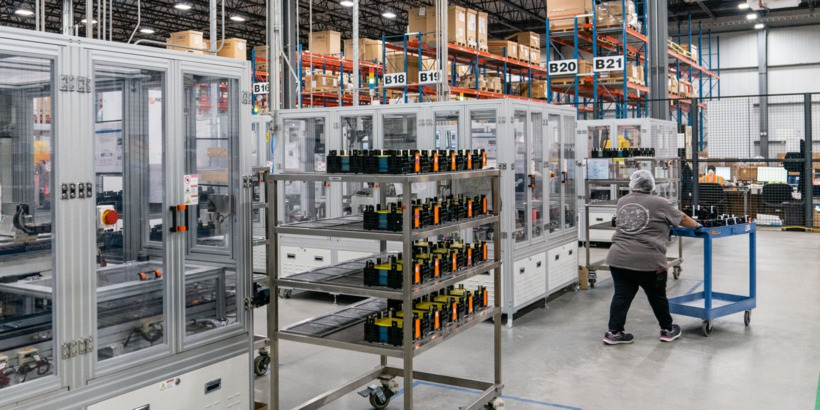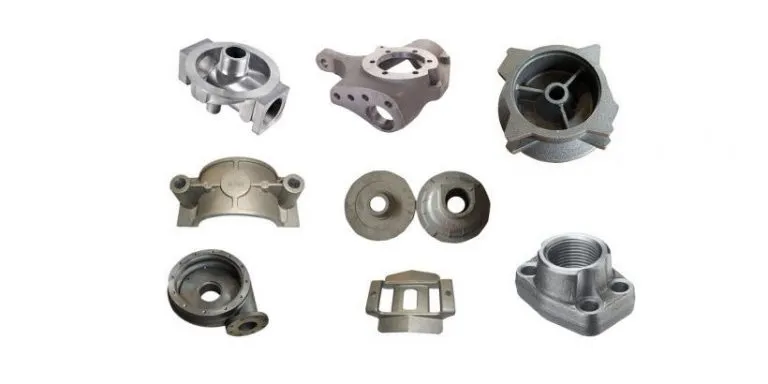10 Tips For Optimizing Your Manufacturing Process
Hey there fellow manufacturers!
Are you looking for ways to optimize your manufacturing process? Well, look no further because I have compiled a list of 10 tips that will help you streamline your operations and increase productivity.
As someone who has worked in the manufacturing industry for years, I know how important it is to continuously improve processes and find new efficiencies.
Whether you’re running a small business or managing a large team, these tips can be applied across industries and are sure to make a positive impact on your bottom line.
So let’s dive in and start optimizing!
Automate, Automate, Automate
As the saying goes, ‘time is money.’
And in manufacturing, every second wasted can be detrimental to your bottom line.
That’s why it’s crucial to integrate robotics into your processes and streamline operations wherever possible.
By doing so, you’ll not only save time but also reduce errors and increase efficiency.
With automation, repetitive tasks that were once done by hand can now be completed at a much faster rate with greater accuracy.
Plus, robots don’t need breaks or sleep, which means your production doesn’t have to stop either.
So if you’re looking for ways to optimize your manufacturing process, start by automating as much as you can!
Eliminate Waste
Now that we have discussed the importance of automation in optimizing manufacturing processes, let’s move on to another critical aspect – eliminating waste.
One way to do this is by reducing clutter in your workspace. A cluttered workplace can lead to confusion, mistakes and ultimately slow down production. It’s essential to keep a clean working environment as it helps workers focus better and improves their efficiency.
Another way to eliminate waste is by streamlining processes, making them more efficient and productive. By analyzing each step in your workflow, you can identify areas where time or materials are being wasted and make necessary adjustments. This will not only increase productivity but also reduce costs associated with wasted resources.
Overall, eliminating waste should be an ongoing effort for any manufacturer looking to optimize their process and improve their bottom line.
Create A Clear Process Flow
Let’s start by discussing how to identify bottlenecks in our manufacturing process, then we can move on to analyzing performance metrics. I’m sure that by looking at both of these aspects, we’ll be able to optimize our process flow in no time.
Identifying Bottlenecks
When it comes to optimizing your manufacturing process, one important step is identifying bottlenecks. By doing so, you can streamline processes and improve communication among team members.
Personally, I have found that taking a holistic approach in reviewing the entire production line helps identify areas where delays are happening or where resources are being underutilized. Once you’ve identified these areas, take steps to eliminate them by improving equipment efficiency or allocating additional resources if necessary.
It’s important to continuously monitor and adjust as needed to ensure optimal performance of your manufacturing process.
Analyzing Performance Metrics
Now that we’ve discussed identifying bottlenecks in the manufacturing process, let’s move on to another crucial step in creating a clear process flow – analyzing performance metrics.
By measuring accuracy and optimizing speed, you can gain insight into how your production line is performing and identify areas for improvement. Personally, I find it helpful to regularly review key performance indicators (KPIs) such as cycle time, throughput, and defect rates.
This allows me to spot trends and take action before any issues become major problems. By consistently monitoring these metrics, you can make data-driven decisions and continuously improve your manufacturing process for maximum efficiency.
Leverage Technology
Nowadays, technology plays a crucial role in enhancing the manufacturing process. It helps to integrate data and streamline workflow, which results in better efficiency and productivity.
By using advanced technologies such as automation tools and software systems, businesses can automate repetitive tasks that were once done manually. This not only saves time but also reduces human errors, thereby improving quality control.
In addition, manufacturers can use sensors and other IoT devices to monitor equipment performance and collect real-time data about production processes. This information enables them to identify bottlenecks or areas of inefficiency quickly and make necessary adjustments to optimize their operations continually.
Moreover, cloud-based platforms provide seamless collaboration between teams located at different sites by sharing critical business data securely over the internet. With these collaborative tools, team members can communicate with each other in real-time to solve problems faster than ever before.
Therefore, leveraging technology is an effective way for manufacturers to stay competitive in today’s fast-paced market environment. By integrating data and streamlining workflows through innovative technological solutions, manufacturers can achieve significant improvements in operational excellence while delivering high-quality products efficiently without compromising on customer satisfaction.
Utilize Visual Management
Picture your manufacturing process as a busy highway. Without proper direction and organization, it can quickly become chaotic and congested. That’s where visual management comes in – the use of clear visuals to improve visibility and streamline operations.
By implementing this method, you’ll be able to see exactly what’s going on at every stage of production, helping you identify bottlenecks or areas that need improvement. Here are some tips for utilizing visual management in your manufacturing process:
- Use color-coded labels or signs to indicate different stages or types of products.
- Create checklists or flowcharts that clearly outline each step in the process.
- Implement digital displays or dashboards to track progress and provide real-time updates.
- Place tools and materials in designated locations with clear labeling to reduce search time.
- Utilize shadow boards to ensure equipment is easily accessible and properly stored.
By incorporating these methods into your manufacturing process, you’ll not only improve efficiency but also create a safer work environment by reducing confusion and minimizing errors.
So give visual management a try and watch as your operation runs smoothly like a well-oiled machine!
Implement Lean Manufacturing Practices
I’m interested in exploring ways to reduce waste and increase efficiency with implementing lean manufacturing practices. Let’s discuss strategies to streamline our manufacturing process and maximize our resources.
Reducing Waste
Are you tired of watching your manufacturing process produce more waste than actual products?
Well, let me tell you something – I’ve been there.
It’s frustrating to see resources go down the drain and profits decrease due to unnecessary waste.
That’s why it’s important to identify bottlenecks in your production line and focus resources on eliminating them.
By implementing lean manufacturing practices, you can reduce waste by streamlining processes, optimizing material usage, and even recycling materials that were once considered unusable.
Don’t let waste control your bottom line – take action now!
Increasing Efficiency
Now that we’ve talked about reducing waste through lean manufacturing practices, let’s focus on another important aspect – increasing efficiency.
As a business owner myself, I understand the importance of streamlining production and operations to maximize profits.
By identifying areas where time is being wasted or processes are inefficient, you can make changes that result in faster turnaround times and increased output.
Implementing strategies such as standardized work procedures and visual management systems can help streamline your operations and ensure everyone is working towards the same goal.
Let’s dive deeper into how implementing these tactics can help improve your bottom line.
Track Performance And Progress
Now that you have implemented changes to your manufacturing process, it’s important to track your progress and measure metrics.
This will allow you to identify areas where further optimization is needed and ensure that the changes made are actually resulting in improved efficiency.
Some key metrics to measure include production cycle time, defect rates, and machine downtime.
By regularly monitoring these metrics, you can quickly identify any issues and address them before they become larger problems.
Additionally, tracking performance can help optimize costs by identifying areas where resources may be wasted or underutilized.
Overall, consistently measuring and analyzing data related to your manufacturing process is essential for continued success and growth.
Conclusion
In conclusion, optimizing your manufacturing process can be a daunting task. But with the right mindset and approach, it’s not only achievable but also rewarding in terms of efficiency, productivity, and profitability.
As an AI language model, I don’t have emotions or opinions like humans do. However, I can tell you that one effective way to optimize your process is by automating repetitive tasks using robotics or software applications. This will save valuable time and reduce human errors while increasing overall output.
Another tip is eliminating waste from your production line. Think about reducing unnecessary steps and actions that add no value to your product or service. As the saying goes, ‘less is more.’ By streamlining your processes, you’ll improve quality control and cost-effectiveness.
Lastly, track performance and progress over time by leveraging technology tools such as data analysis software. You need accurate data to make informed decisions when improving your manufacturing process continually. Remember: ‘What gets measured gets managed.’
In summary, optimizing your manufacturing process requires hard work, dedication and persistence over time. It’s all about continuous improvement through automation, waste reduction, lean practices implementation among others discussed above – so go forth confidently knowing these tips!






